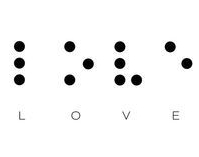
I am a part of a larger committee in my state called simply, “The CVI Committee”. We, as colleagues, gather together to discuss a wide range of issues all pertaining to cortical visual impairment (CVI): current literature, new information in the field, challenges in the field with our students with CVI, successes in the field, and specific students who have been diagnosed with CVI. This includes conversations about interventions which we have had success, challenges we experience with this unique population of students, and watching videos of students together as a group in order to have group discussions about what specific characteristics we are observing as we go through the CVI scale. I may have lost some of you at this point, so I am going to slow down and start from the beginning…
Students with CVI, or cortical visual impairments, have a very unique type of visual impairment. The website Little Bear Sees has a terrific description of what CVI actually is which I have posted here:
“Cortical visual impairment (CVI) is a term used to describe visual impairment that occurs due to brain injury. CVI differs from other types of visual impairment which are due to physical problems with the eyes. CVI is caused by damage to the visual centers of the brain, which interferes with communication between the brain and the eyes. The eyes are able to see, but the brain is not interpreting what is being seen.”
When I hear CVI, my brain immediately jumps to reciting the 10 characteristics, developed by Dr. Christine Roman-Lantzy. This is really the basics I learned in my Graduate courses. The plethora of information I know now about CVI is a directly related to the amazing people I have around me that I am constantly learning from, my TVI colleagues. I did not really get the chance to get down and dirty with the CVI rating scale until my student teaching experience. Unfortunately, this is the extent of the trainings many TVIs get regarding CVI before going out in the field to work with students diagnosed with this unique visual impairment, and many are offered absolutely nothing about CVI in their training programs.
(See 10 Characteristics of CVI listed here: CVI Fact Sheet located on Paths to Literacy posted by Yvonne Locke in 2017)
Living and working in New England, I was lucky enough to learn about the CVI scale and how to assess a child with a cortical visual impairment. New England, especially CT, is at the forefront of providing training and awareness to TVIs that work here. Before my hands on experience working with students with CVI, I was intimidated and unsure of where to start or how to approach a child with a new diagnosis of CVI.
My student teaching experience was one that I wish others could have. Through working with my student teacher, Peg Palmer, I was able to shadow someone who was highly skilled and knowledgeable in not only CVI in general, but also in the assessment piece which can be scary to look at the first time. I remember it like it was yesterday, sitting in Peg’s car after visiting a student going line by line through the scale also create by Dr. Roman-Lantzy. Peg and I buzzed through the first few lines, but some were not so easy. She asked my opinion first and then when my confidence wavered she would bring me back down to what we observed in our assessment and if the students reaction was consistent with what the statement was saying.
The more we went through the scale the more my confidence grew. I could not wait to get back in there to visit the student again as I had a long list of things on the assessment that I wanted to test again. Seeing even the littlest bit of visual attention from this particular student was work for sure. He made me work hard to get even the smallest little glance in the direction I wanted, but when I saw it I wanted to squeal I was so excited but I didn’t for fear that any noise I made I would lose his attention. These little victories I craved and it made me want to work harder. That was when I found my stride and my comfort level began to increase.
I am not trying to say that working with children with CVI is easy. In fact I think working with students with CVI can be very challenging and frustrating at times. In some extremes you can go visit a student 5, 10, 15 times and on the 16th visit you are sure you saw the tiniest of looks which gives you that burst of energy to push harder on the next visit. In other instances, after incorporating one or two modifications in a student’s environment can be an immediate game changer!
I had no intention to teach CVI 101 in this short post, but instead share some basics to get us started so that my post that come later will make even more sense to you. 🙂 CVI and all that comes with it can be overwhelming at first, but I hope that the more exposure, training, and general information that TVIs get their hands regarding CVI will allow for better education for our teams which in turn will provide a better learning environment and experience for our students who have this diagnosis.
The goal of posting information about CVI is to share the ideas and the reasoning on why our approach assessing children with CVI should be different than how we assess other children we work with who have a visual impairment that is “physical” as described in the Little Bear Sees definition which the majority of our students have been diagnosed as having.
I have included a few links at the bottom of this post for you to check out at your leisure that has some neat stuff about CVI and is a great introduction to tools and assessments out there to provide support when working with children with CVI. Having a clear understanding of the 10 characteristics of CVI and how to implement some simple modifications is a great start to assisting our students.
Not all of us are as lucky as I am to be able to meet with colleagues to share in a committee setting on a regular basis. For that reason, I will be sharing more of some interventions I have suggested to teams that I work with. I also hope to be able to share some of the amazing ideas that my very talented and dedicated colleagues are implementing in the field with amazing success!
*Here are a few links to check out if you are interested in some more basics about CVI;
This is a great powerpoint/slideshow I found on Perkins.org with some terrific examples of each characteristic: Building Strategies Around CVI Phases
APH has a ton of information all in one place located here; APH CVI Resources

As a mother of a 16 year old daughter who had lacked a TVI with CVI knowledge for almost her entire educational career, thank you. Thank you for and from the smaller people you are working with and their families. You can’t imagine how much of the world you will open up to them with your desire to learn and teach to the specific needs of your CVI students. It continues to be my prayer/desire/hope/call to action as a parent to bring more TVIs to see the light (pun intended, even though E is on Phase III, light matters).
Truly,
Lynn, Don and E
LikeLike
Lynn, Don and E,
Thank you so much for your comment and taking the time to read my post. I have to say that I am very lucky to live and work in the area of the country that I do where there is such an incredible knowledge of CVI present. I just finished the assessment course on the CVI rating scale through Perkins, (keep an eye out for my post about my experience with the course), and realize that there is so much more for me to learn. I feel that to better serve our families and students we need to be exposed to as many resources as we can and in turn share our knowledge with other professionals that our students come in contact with day to day throughout their routine.
Thank you again for reading, and I wish you and your family the very best!
Beth
LikeLiked by 1 person
My daughter has this since the recent removal of a benign tumor from her brain. We are struggling as we find our way through this. I just want to do all that I can for her. I have found it difficult to find information about it. Her doctors say give it time. It has been 10 months. I was so happy to read your post. I will check out your other links also. Please let me know of anywhere else that I can go to find information to help my daughter. Thank you.
LikeLike